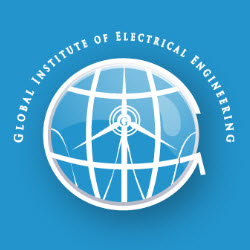
Introduction
Battery Energy Storage Systems (BESS) are transforming how commercial businesses manage electricity, providing cost savings, operational resilience, and grid support. These systems store energy when it’s inexpensive or available and discharge it when electricity is costly or when power is needed.
This article explores 10 key commercial BESS applications, explaining how they work, their benefits, and real-world examples of businesses maximizing the value of energy storage.
1️⃣ Peak Shaving (Load Management & Demand Charge Reduction)
What is Peak Shaving?
Peak shaving is the process of reducing a business’s peak electricity demand by using BESS to discharge stored energy when demand is highest. Since utilities charge businesses based on their peak power usage (kW) during a billing cycle, reducing peak demand significantly lowers electricity costs.
How BESS Helps with Peak Shaving
- The battery charges during off-peak hours when electricity prices are low.
- When power demand spikes, BESS discharges stored energy, reducing the amount drawn from the grid.
- This reduces demand charges, which can account for 30%–50% of a business’s electricity bill.
Example: Manufacturing Facility
A 500 kW BESS installed at a large manufacturing plant reduces peak demand by 200 kW.
- Demand charge: $15/kW
- Monthly savings: $3,000 (200 kW × $15/kW)
- Annual savings: $36,000
By strategically discharging BESS during high-demand periods, the facility lowers operational costs while maintaining production schedules.
2️⃣ Demand Response (Grid Services Participation & Load Curtailment)
What is Demand Response?
Demand response (DR) is a utility program where businesses reduce their energy use during peak demand periods in exchange for financial incentives. Instead of shutting down operations, businesses with BESS can discharge stored energy to meet DR requirements while continuing normal operations.
How BESS Supports Demand Response
- The grid operator signals a DR event when demand is high.
- The BESS discharges energy, reducing grid consumption.
- The business earns revenue for participating while maintaining power reliability.
Example: Large Retail Chain
A supermarket chain with 20 locations installs BESS at each store, each with a 300 kW storage system.
- Each store reduces demand by 150 kW during 10 DR events per year.
- Incentive rate: $50/kW per event.
- Annual revenue per store: $75,000 (150 kW × $50 × 10 events).
- Total annual revenue for 20 stores: $1.5 million.
By integrating BESS into DR programs, businesses can monetize their energy storage assets while helping utilities stabilize the grid.
3️⃣ Energy Arbitrage (Time-of-Use Optimization & Load Leveling)
What is Energy Arbitrage?
Energy arbitrage involves charging BESS when electricity prices are low (off-peak) and discharging when prices are high (on-peak), allowing businesses to reduce their energy costs.
How BESS Supports Energy Arbitrage
- The battery stores cheap electricity overnight or during solar overproduction.
- When energy prices rise, BESS discharges stored power, avoiding high utility rates.
- This lowers the total cost of electricity while maintaining normal operations.
Example: Office Building with Time-of-Use (TOU) Pricing
An office building with a 500 kWh BESS follows a TOU pricing structure:
- Off-peak price: $0.08/kWh
- On-peak price: $0.25/kWh
- Energy shifted per day: 400 kWh
- Daily savings: $68 (400 × ($0.25 – $0.08))
- Annual savings: $24,820
By optimizing energy costs through arbitrage, businesses enhance profitability without affecting operations.
4️⃣ Backup Power & Resilience (Reducing Downtime Risks)
Why Businesses Need Backup Power
Power outages cause operational disruptions, financial losses, and equipment failures. BESS provides instantaneous backup power, ensuring business continuity.
How BESS Provides Backup Power
- The BESS detects an outage and immediately discharges stored energy.
- Essential equipment remains powered while the grid is down.
- Unlike diesel generators, BESS provides clean, silent, and instant power.
Example: Data Center with BESS Backup
A data center that loses power for 1 hour faces revenue losses of $10,000 per minute.
- A 1 MWh BESS provides 2 hours of backup power.
- The system prevents $1.2 million in revenue losses per outage.
5️⃣ Renewable Energy Integration & Self-Consumption (Solar + Storage Optimization)
What is Solar + Storage Integration?
Businesses with solar PV can store excess energy and use it later, reducing reliance on the grid.
How BESS Supports Solar Integration
- Stores surplus solar energy instead of exporting it at low rates.
- Discharges stored energy when solar production drops.
- Increases energy independence and reduces reliance on fossil fuels.
Example: Corporate Headquarters with Solar + BESS
A corporate office with a 1 MW solar system installs a 500 kWh BESS.
- Solar curtailment reduced by 30%.
- Grid consumption cut by 40% during peak hours.
- Annual energy savings of $50,000.
6️⃣ Transmission & Distribution (T&D) Deferral (Grid Expansion Savings)
What is T&D Deferral?
BESS can delay or eliminate costly grid infrastructure upgrades by reducing strain on electrical systems.
Example: Industrial Park Participating in Utility Grid Programs
A 1,500 kW BESS installed at an industrial park:
- Reduces grid strain, avoiding a $10M substation upgrade.
- Utility provides a $100/kW incentive for participating businesses.
- Each business with a 500 kW system receives $50,000 per year in utility incentives.
7️⃣ Frequency Regulation (Grid Stability & Response Services)
What is Frequency Regulation?
BESS rapidly charges or discharges to maintain grid frequency within safe limits, preventing blackouts.
Example: Utility-Scale BESS in Frequency Regulation Markets
A 10 MW BESS participates in frequency regulation markets:
- Compensation: $25/MW per hour.
- Daily revenue: $6,000.
- Annual revenue: $2.2 million.
8️⃣ Ancillary Services (Voltage Support & Spinning Reserve)
What Are Ancillary Services?
BESS provides grid support functions such as:
- Voltage regulation to stabilize power supply.
- Spinning reserve as a backup power source.
- Reactive power support to improve grid efficiency.
9️⃣ Microgrid Applications (Energy Independence & Backup Power)
What is a Microgrid?
BESS enables businesses to create self-sustaining microgrids, operating independently when needed.
Example: Hospital with Microgrid & BESS
A 1 MWh BESS installed at a hospital supports a solar + generator microgrid, ensuring 100% power availability during outages.
🔟 Grid Stabilization (Balancing Renewable Energy & Preventing Blackouts)
How BESS Stabilizes the Grid
- Absorbs excess renewable energy and releases it when needed.
- Prevents power fluctuations caused by solar or wind variability.
Example: Wind Farm with 20 MW BESS
- Stores excess energy when wind speeds are high.
- Discharges during low wind periods to maintain stable power supply.
Conclusion
With peak shaving, demand response, energy arbitrage, backup power, and more, BESS provides cost savings and grid resilience for businesses.












0 responses on "Commercial BESS Applications: Unlocking Value with Battery Energy Storage Systems"